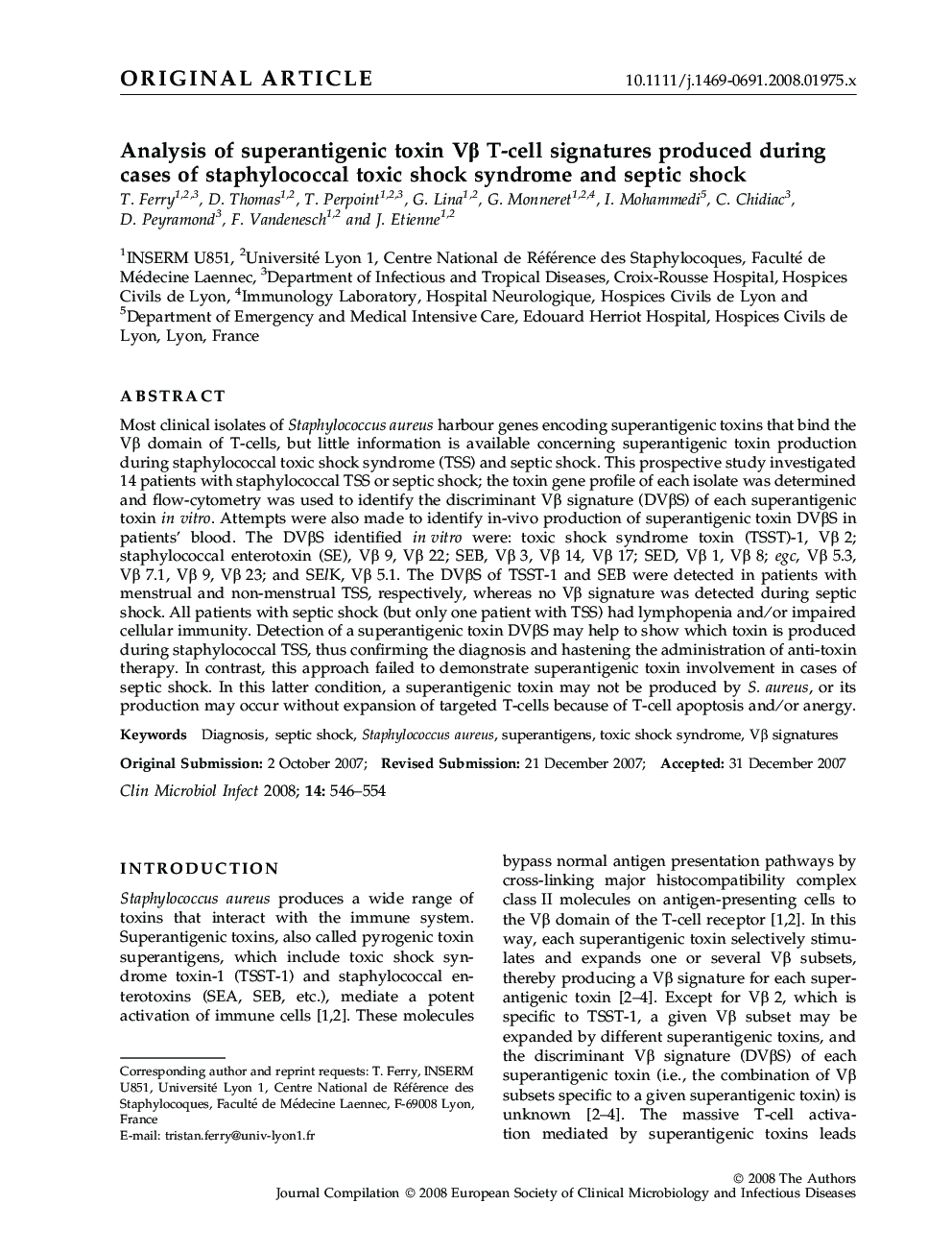| Article ID | Journal | Published Year | Pages | File Type |
|---|---|---|---|---|
| 3398631 | Clinical Microbiology and Infection | 2008 | 9 Pages |
ABSTRACTMost clinical isolates of Staphylococcus aureus harbour genes encoding superantigenic toxins that bind the Vβ domain of T-cells, but little information is available concerning superantigenic toxin production during staphylococcal toxic shock syndrome (TSS) and septic shock. This prospective study investigated 14 patients with staphylococcal TSS or septic shock; the toxin gene profile of each isolate was determined and flow-cytometry was used to identify the discriminant Vβ signature (DVβS) of each superantigenic toxin in vitro. Attempts were also made to identify in-vivo production of superantigenic toxin DVβS in patients’ blood. The DVβS identified in vitro were: toxic shock syndrome toxin (TSST)-1, Vβ 2; staphylococcal enterotoxin (SE), Vβ 9, Vβ 22; SEB, Vβ 3, Vβ 14, Vβ 17; SED, Vβ 1, Vβ 8; egc, Vβ 5.3, Vβ 7.1, Vβ 9, Vβ 23; and SE/K, Vβ 5.1. The DVβS of TSST-1 and SEB were detected in patients with menstrual and non-menstrual TSS, respectively, whereas no Vβ signature was detected during septic shock. All patients with septic shock (but only one patient with TSS) had lymphopenia and/or impaired cellular immunity. Detection of a superantigenic toxin DVβS may help to show which toxin is produced during staphylococcal TSS, thus confirming the diagnosis and hastening the administration of anti-toxin therapy. In contrast, this approach failed to demonstrate superantigenic toxin involvement in cases of septic shock. In this latter condition, a superantigenic toxin may not be produced by S. aureus, or its production may occur without expansion of targeted T-cells because of T-cell apoptosis and/or anergy.
